Neon fish: varieties, selection, care and reproduction
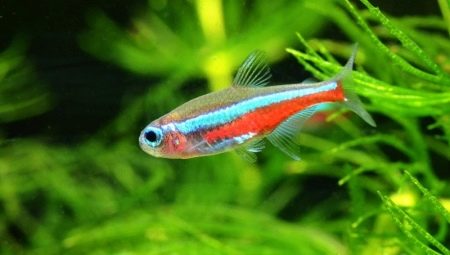
Aquarium is an activity that not only calms, but also develops a person creatively. After all, in order to design an aquarium in an interesting way, you need to make some effort. In addition, it is very important to choose the right inhabitants of the water reservoir - so that they please with their beauty and behavior. One of these inhabitants is the neon fish, which has been incredibly popular for over 100 years. How to grow neon correctly, how to feed it, whether it is suitable for beginners, we will tell in this article.
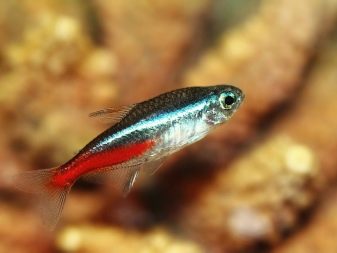
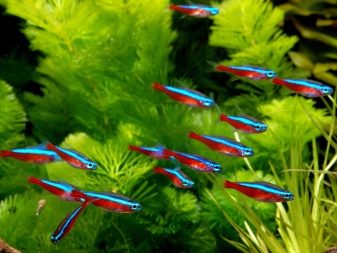
Description
The birthplace of neons is the water bodies of South America, Peru, Brazil. Fish prefer a weak, slow current... Their color is due to natural necessity, because the water in which they live is often cloudy, filled with plant remains, covered with low hanging branches and vines.
Aquarium neons look very small and slender. They have a flat on the sides, elongated body, with the help of which they can quickly move between plants and hide in shelters. Body length - from 3 to 3.5 cm. It is very easy to understand that neon is in front of you thanks to the characteristic neon strip, which can be clearly seen even in the dark. The fins of the fish are small and transparent. As for the nature of the pets, it is quite calm and peaceful. These are schooling fish, so they definitely need neighbors, as well as a spacious aquarium where the fish can frolic.
Neons live for about 4 years, but only with good care.
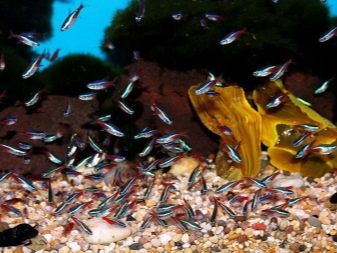

Views
If you look at the body of a neon fish, you will notice that it is conditionally divided into two halves. One of them is usually silver, while the other is colored. It is the color of this second half that determines the name of the variety. Consider the different types of neons found both in nature and bred by selection.
- Blue (ordinary). This is the most purchased type of fish, it is found most often. The lower part of such fish is colored red, otherwise the bluish-gray color predominates.
- Blue. Appeared as a result of crossing red and blue neon. Quite dark, the body is slender, a very clear blue stripe stretches along the entire perimeter.
- Red... Such fish resemble blue neons, differences can be traced only in color. The back of such fish is beige, and there are two neon stripes: one of them is reddish, and the other is blue.
- Black. Also similar to the blue variety, but darker in color. There are two stripes on the body. Silver is narrower, but black will be wider.
- Green... Small, rather hardy fish with a turquoise neon stripe. The back of neon green has a bright emerald color scheme.
- Purple. A very interesting variety, also called pink. A clear blue stripe is observed in the middle of the body of the fish, the scales have a bright purple or pink tint.
- Orange. Such neons are very rare, it is almost impossible to meet them. Artificially bred, they are descendants of red species. The body is light orange, the neon flat is pale, blue. Yellow neon, which has a golden color, is very similar to this species.
- Diamond. A fish with such an interesting and beautiful name was also bred artificially. The body is light, almost white, the end of the tail has a red color. The neon stripe, unlike other species, is not observed.
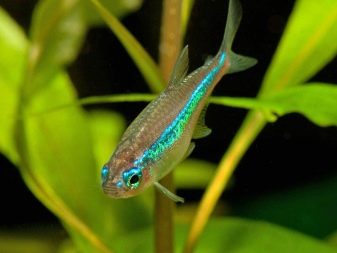
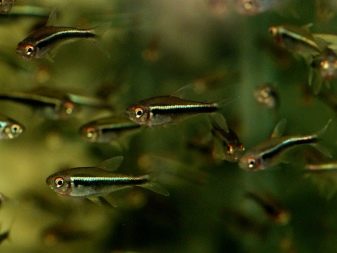
How to choose?
Neons are a fish that even a beginner in aquarium hobby can handle just fine. If you have never dealt with fish, and this is your first trip to the pet store, we recommend using a few helpful tips.
- Go to different shops. If you often travel around town or there are several fish shops near your home, visit all of them. This will help you better study the features of behavior, as well as determine the color.
- Never be guided by feelings of pity. Of course, the weakest little fish will cause a desire to shelter and raise it, but such an individual may well turn out to be sick, unable to reproduce.
- Pay attention to seller behavior... If the consultant has been catching fish for too long, driving them around the tank, it means that he is incompetent. Such fish will then go away from stress for a long time.
- Examine the exterior. Healthy neons should be active and nimble. Fish cannot constantly hide in shelters, be afraid. The scales of future pets are shiny, without suspicious spots, the eyes are clean. The body should be slim - if you notice swelling, it is better not to make a purchase. When the seller has caught the fish and placed them in a plastic bag, you can get a closer look. In case of dissatisfaction with the appearance, do not hesitate to ask for another individual.
- Don't buy single fish. Neons cannot live alone, from this the fish will quickly decay and die.
It is best to buy several individuals that have already formed their flock.
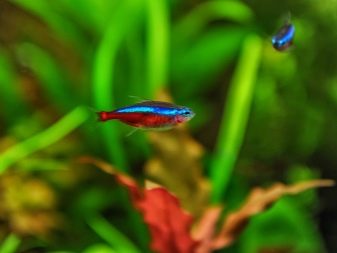
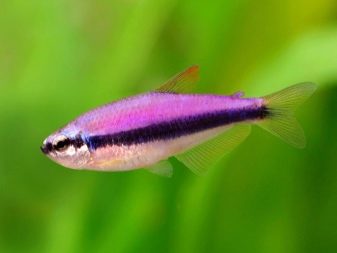
How to distinguish a female from a male?
The difficulty in determining the sexual characteristics of neons lies in the fact that it is possible to clearly distinguish the female from the male no earlier than they are 8 months old. At the same time, pet stores sell fish that are literally a couple of months old. Therefore, the best solution would be to purchase about ten individuals, and subsequently they will independently choose their partners.
When the fish grow up, you can already tell them apart. It's pretty simple:
- females are larger in size, their body has rounded shapes, and males, on the contrary, are smaller, flatter, elongated;
- the neon strip in females has bends, in males, exceptionally straight lines are visible.
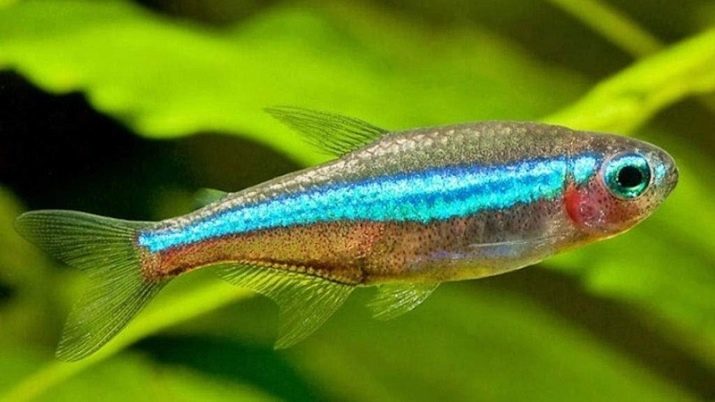
Content rules
Aquarium neons are fish that are unpretentious to the conditions, which are extremely easy to breed and maintain.... The only thing is that they cannot stand too sharp changes in water parameters. Therefore, these fish should be bought only when the aquarium is properly started, everything necessary is installed in it, and the ecosystem meets the requirements.
Aquarium requirements
For the comfortable existence of fish, you will need to acquire an aquarium with a volume of at least 10 liters. This is for 4 or 6 fish. If there are more neons or they live in the vicinity of other fish, a more spacious container will be needed. As already mentioned, the aquarium should be settled so that the fish are not stressed.
The water is changed to a third of the volume followed every week. It is important to use settled liquid. Temperature readings should be within the range of 18-24 degrees, acidity - up to 7.5 pH. As for oxygen, here fish are very unpretentious, because in nature they often have to live in turbid waters filled with plant debris. Neons will really like the peat filler, which will bring the water parameters closer to natural ones. Bright lighting is not required for neon residents. An abundance of light, on the contrary, will lead to a variety of diseases. Here you also need to remember that in nature fish live in the shade.
The light should be diffused lamps are placed only on top of the aquarium. In addition, plants will help provide the right lighting. It would be nice to get a few floating ones - they will contribute to dispersal.
There should be a lot of greenery in the aquarium, since neons like to hide and slip through algae. You can choose any plants you like, but most of all aquarists recommend lush, with long stems. Such species as elodea, vallisneria, hornwort will look interesting. Different types of moss are an absolutely safe bet. In addition to plants, neons will also need a variety of driftwood, shards, and artificial grottoes. But do not forget about the sense of proportion - nimble pets need a lot of space to play.
In general, any soil is suitable, but it looks the most beautiful dark sand or basalt. So the fish will be more familiar, because in their natural habitat they move along the dark bottom.
And also the owner will be able to appreciate the attractiveness of the pets, because against such a background the neon strip will appear even brighter, more colorful.
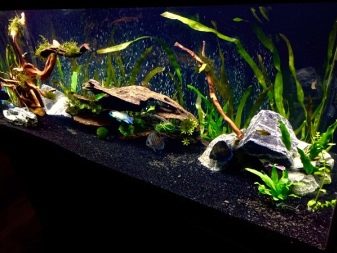
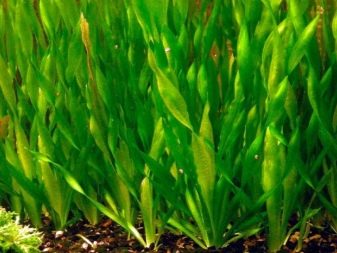
What to feed?
Neons living in nature have a rather varied diet: these are all kinds of insects that have fallen into the water, and algae, and tiny underwater microorganisms. At home, fish will be happy to eat both natural and artificial food. Food types can be alternated, dry food does not harm the fish, but try to choose proven brands. You can pamper neons with bloodworms, brine shrimp, and a tubule.
Let's consider a few more useful recommendations:
- pets are fed once a day;
- once a week, you will need to completely abandon food so that the fish's body can "unload" (fish are very prone to rapid weight gain);
- feed should be poured slowly so that it does not rot at the bottom, becoming a source of bacteria;
- food should be small, since neons have a small mouth.
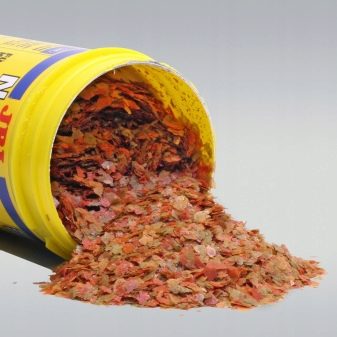

Breeding
Neons are not viviparous fish that reproduce by spawning. The process of breeding them is quite interesting, but sometimes tedious, especially when fry appear. In addition, babies can only be expected in water, the parameters of which are fully consistent with natural ones.
The spawn settles in a separate container, the volume of which is about 20 liters (for two pairs of parents).The tank is thoroughly washed and disinfected, then distilled water is poured into it, to which about 300 g of liquid from the general aquarium is added. Remember that without these conditions, you will not be able to get offspring. Neons often breed in a common aquarium, only fry do not come out of this caviar. That is why the parameters of softness and naturalness are very important:
- the medium must be slightly acidic;
- pH - no more than 6;
- temperature - from 24 to 26 degrees.
A small amount of Javanese moss must be placed on the bottom of the selected tank, but before that, they check for snails and other organisms. The light needs to be made dim, diffused, and only in one area of the aquarium, the rest of the areas are darkened.
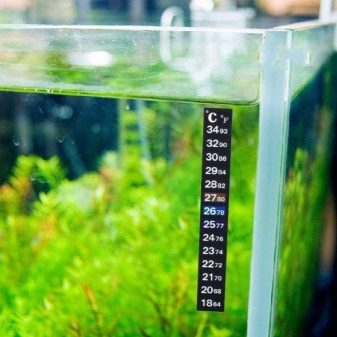

A month before spawning, fish begin to feed well with live food, but immediately before mating, the feeding process stops. Pets are launched into the tank in the evening, where they swim calmly until dawn. Closer to the morning, the pair begins mating: the female lays eggs, the male swims behind her, keeping up. In total, the female is able to lay down up to 200 eggs, which at first cling to the leaves, and then slide to the bottom. When the process is over, the fish are moved to the community aquarium, as the parents can perceive the eggs as tasty food.
It is important to note that caviar should never be lit. It is best to place the spawning box in a dark place. And also after a few hours, the eggs are carefully examined, since the survival rate is usually low. The whitened specimens are immediately pipetted and discarded. When fry appear, do not be intimidated by unusual behavior. At first, the kids seem to hang in space, and they will only swim for 4 days, then they will start eating.
Remember that youngsters see almost nothing, so light will negatively affect their eyes.... Only a small illuminated area is left in the aquarium, where the fry will swim for food. They are fed with boiled chicken yolk, rotifers, or special food designed specifically for young animals. The temperature of the liquid in the tank should be about 20 degrees, a tenth of it is changed every day.
The lighting is increased gradually so that by the month of life the parameters should be the same as for adult fish.
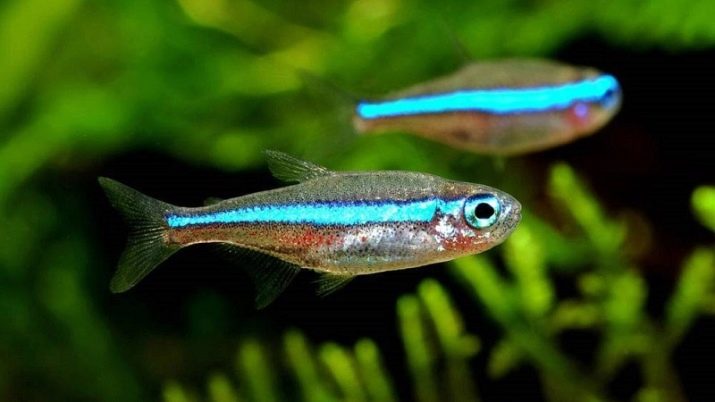
Compatibility with other fish
Neons are very peaceful fish with a good, livable disposition. They get nervous only during the spawning period, but even then they do not create any special problems. The optimal neighbors will be fish that do not exceed neons in size: swordtails, guppies, rasbora. A good solution would be small catfish - real aquarium orderlies. And here large predatory pets are absolutely not suitable... These are, for example, cichlids, which are capable of destroying an entire flock. The same applies to territorial goldfish.
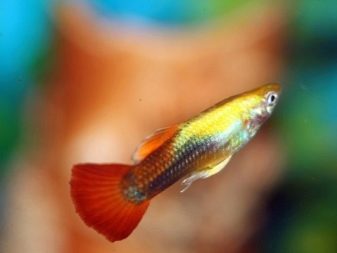
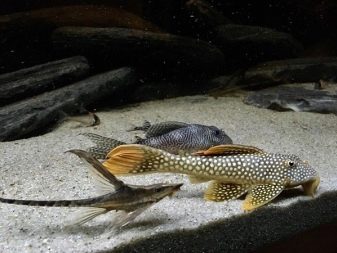
Diseases and prevention
Aquarium neons, although they are unpretentious pets, are still quite fragile and prone to stress. And prolonged stress can cause various diseases. One of the most dangerous diseases - plistiphorosis. It is provoked by a fungus, which can be brought by sick individuals or contaminated water. The fish that catch the ailment instantly fade, lose liveliness and energy, swim with their tail up. There is no treatment, such fish will have to be removed from the aquarium, and the container itself will have to be disinfected.
Another disease ichthyophthiriosis. Various bumps, specks appear on the body of neon, the pet looks like it is sprinkled with semolina. This "sprinkling" and caused the popular name of the disease - "semolina". To heal the disease the aquarium is saturated with oxygen, and the water temperature is increased by a couple of degrees. If these measures are ineffective, it is recommended use purchased drugs.
In general, the listed diseases occur quite rarely, but their cause is also the negligence of the owners.So that the fish do not get sick and fully live the time allotted to them, it is only necessary to maintain the water temperature at the proper level, monitor the indicators of hardness and acidity, feed the fish in time and not overfeed them.
New pets, which are planned to be moved in, are kept in a separate container for a week.

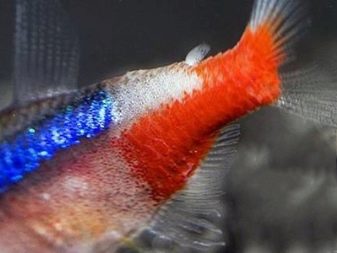
Reviews
You can find a variety of reviews about neon fish. Many aquarists say that such pets are very beautiful, they completely relieve stress and get rid of fatigue in just 5-10 minutes of observation. In the dark, they resemble little fireflies, and in the sunlight they shimmer with all the colors of the rainbow. In addition to its elegant appearance, neons do not require difficult conditions of detention, they are calm, they perceive neighbors well. The design of the aquarium is also not difficult, the main thing is to set up the light correctly.
But there are less positive responses as well. For example, some have argued that the notion that neon is not capricious is wrong. Fish are sensitive to temperature - the higher it is, the more the life of underwater inhabitants is reduced. In hot summer, you will have to monitor the water parameters all the time.
In addition, buyers said that even in properly running aquariums, neons have a high chance of getting sick and dying.
For information on how to properly care for neons, see the next video.








